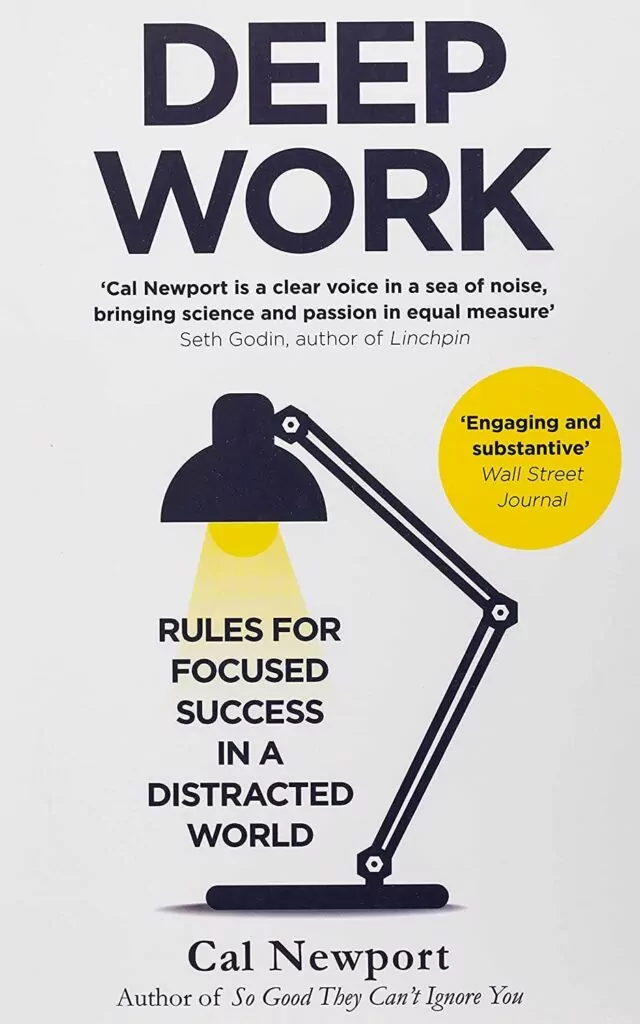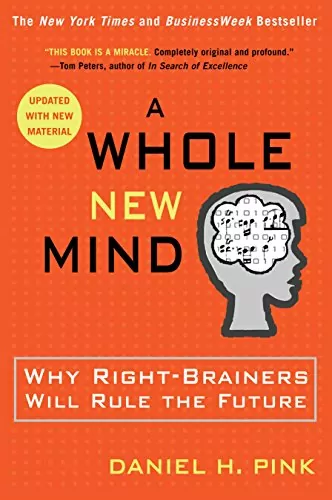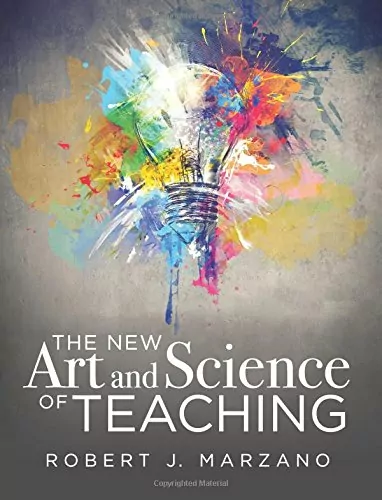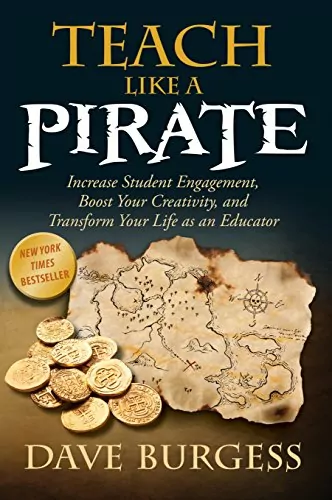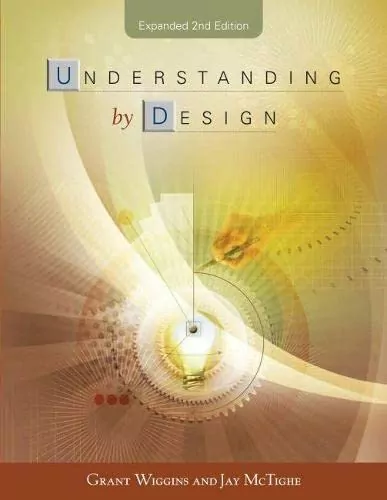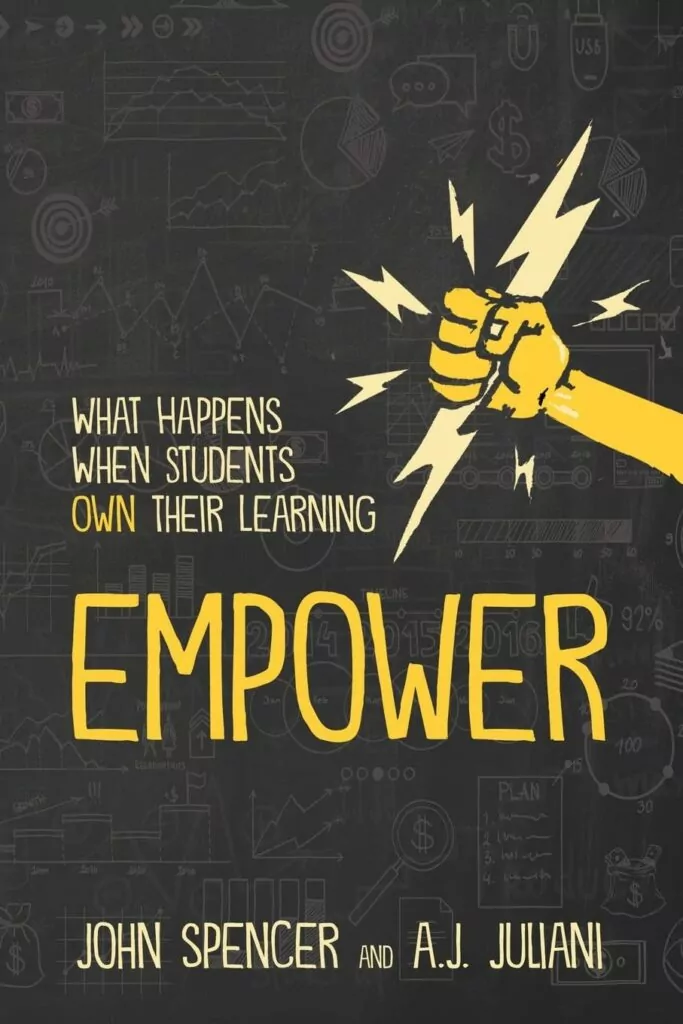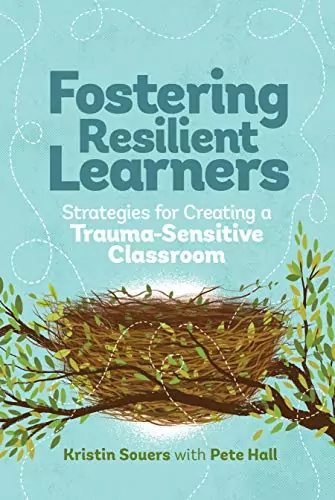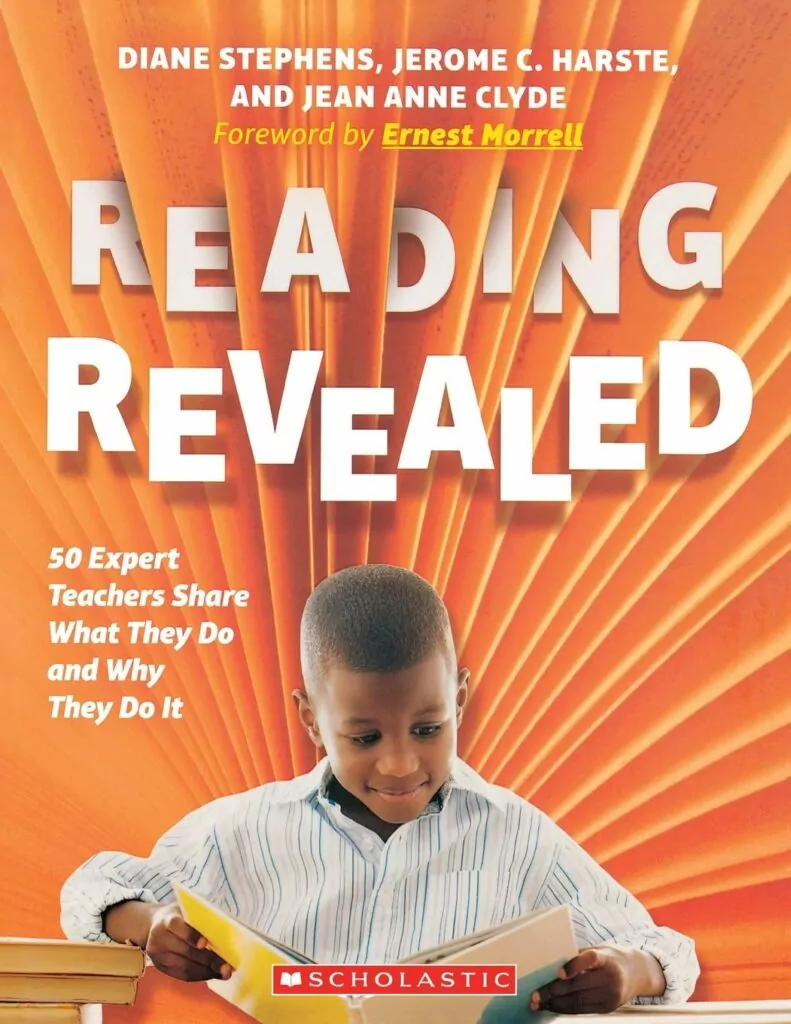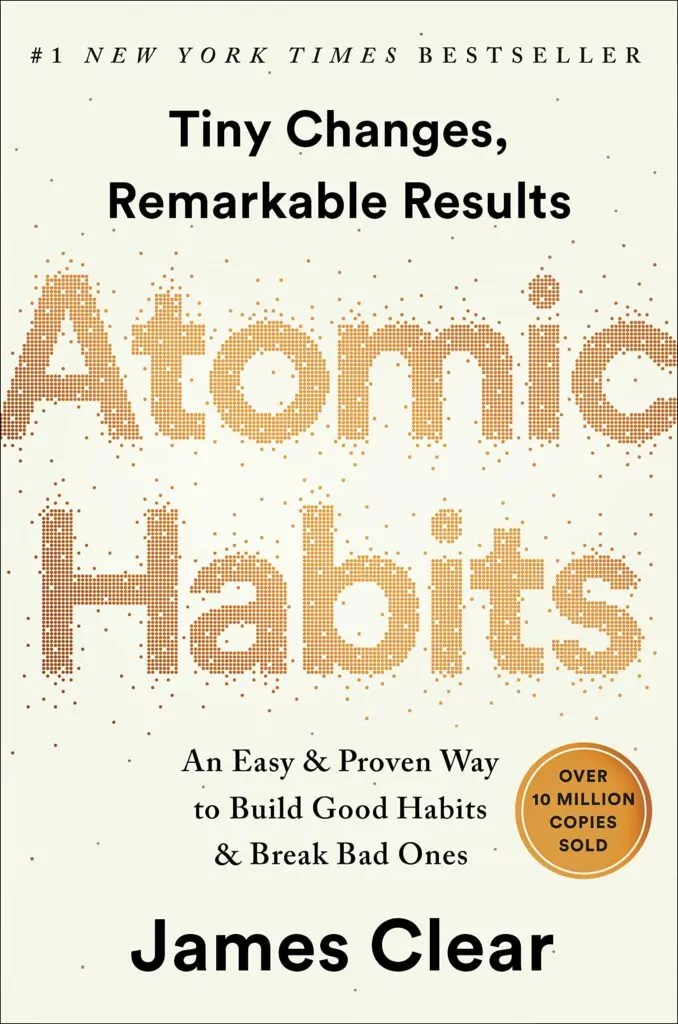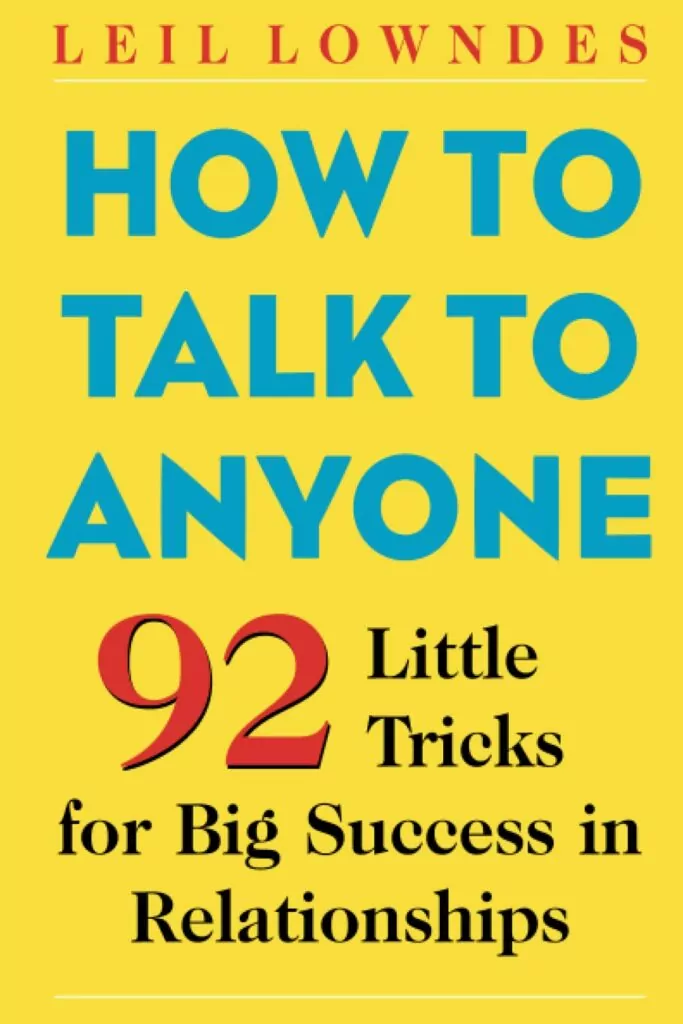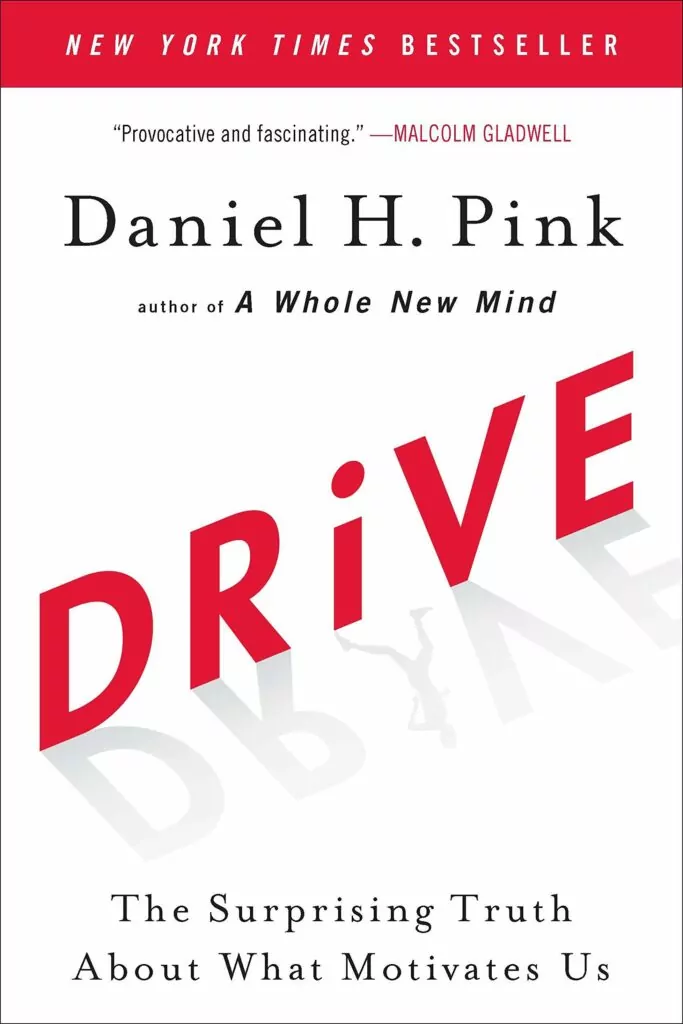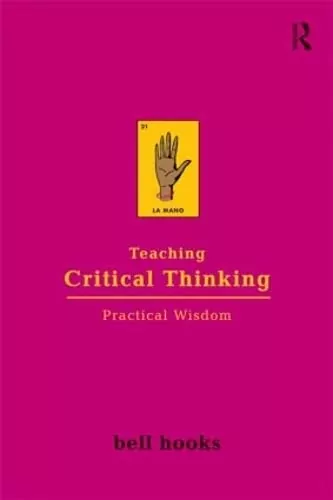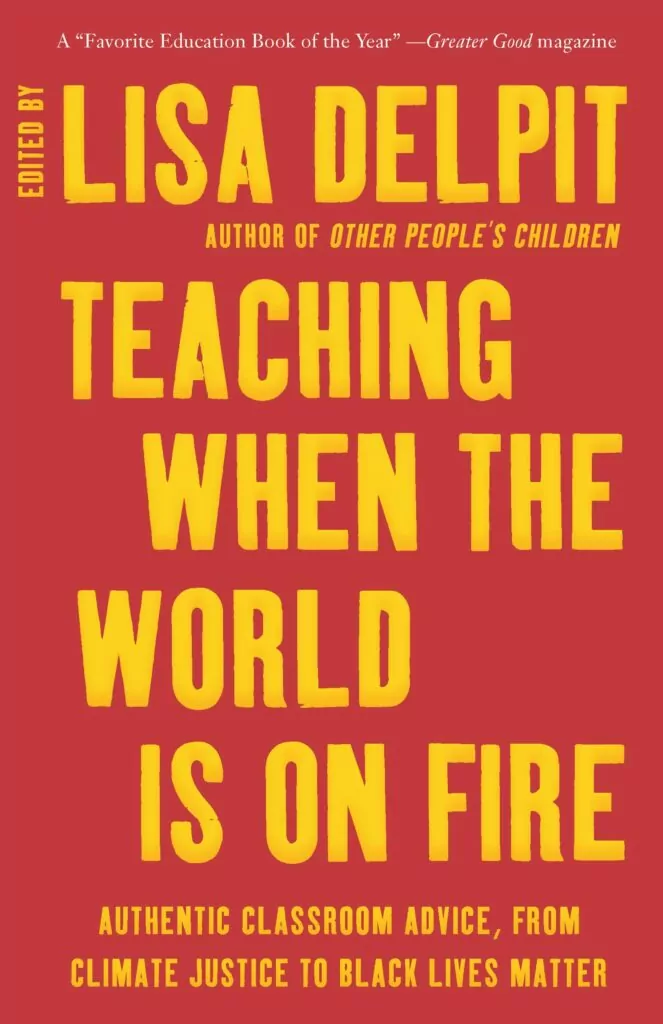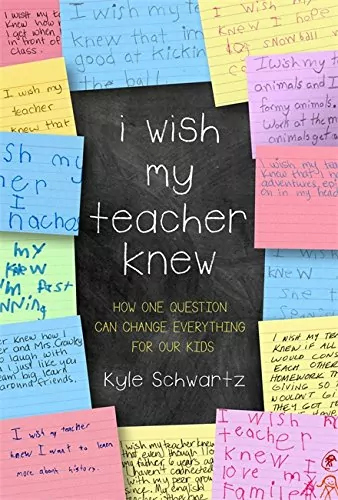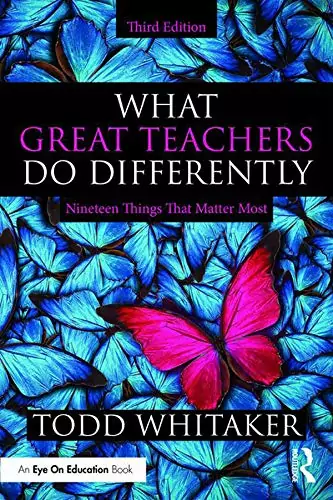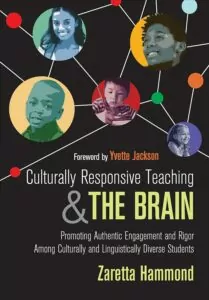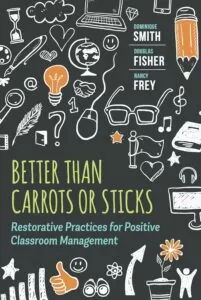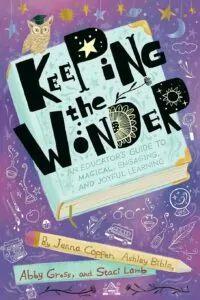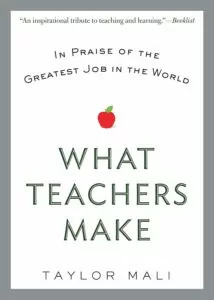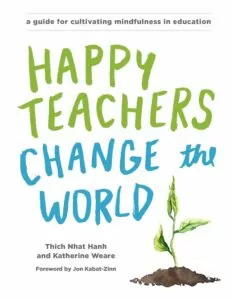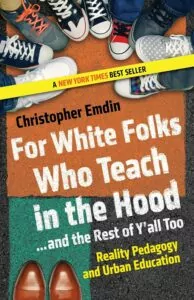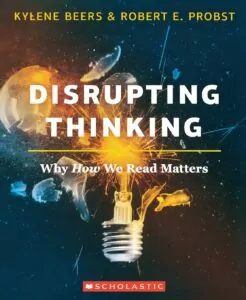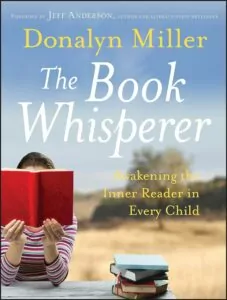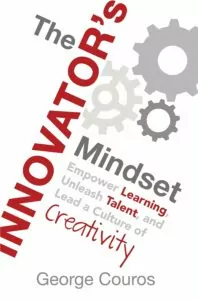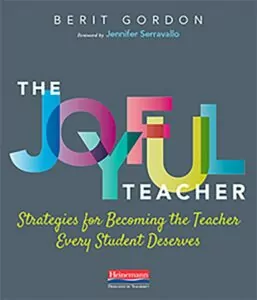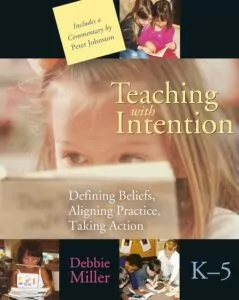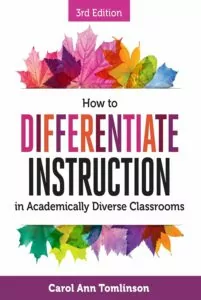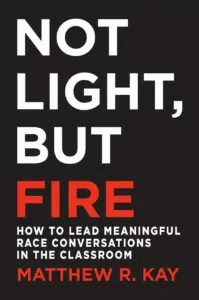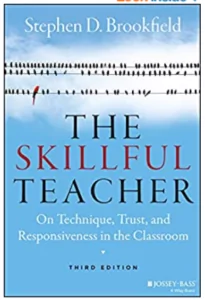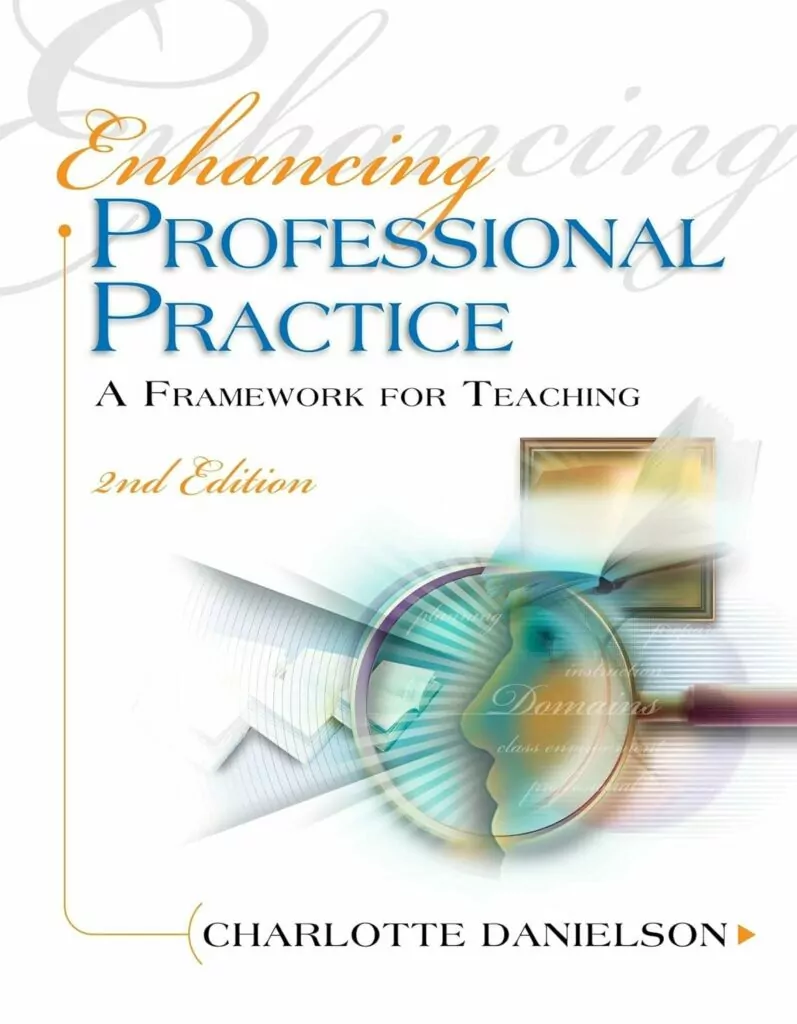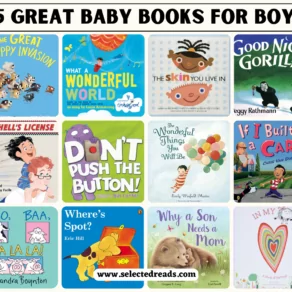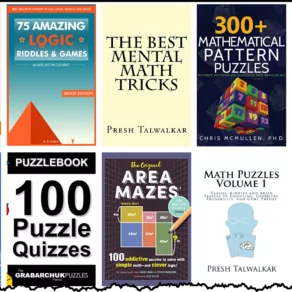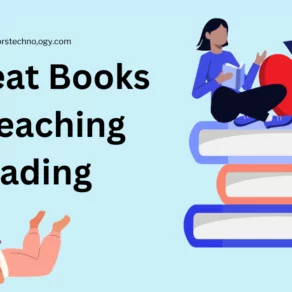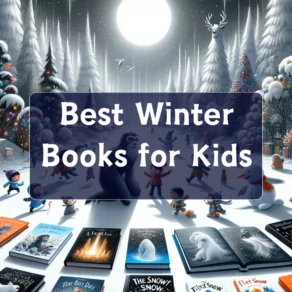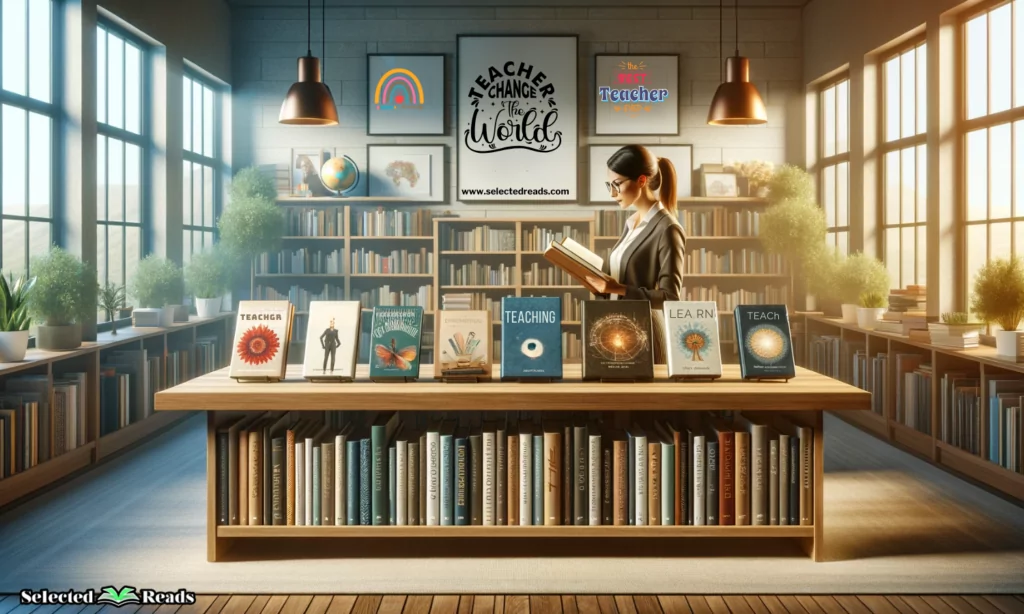
Teacher professional development is a field as expansive as it is essential, making it quite a task to distill its wealth of resources into a concise list of recommendations. When I recently looked over my own spreadsheet where I’ve been jotting down titles relevant for teacher development, I was taken aback by the sheer volume of entries. The list has grown considerably over the years, and each title seems to offer its own unique sliver of wisdom, informed practice, or transformative strategy.
Given that vast landscape, the selection below is, of necessity, limited. It’s far from exhaustive, but what it lacks in comprehensiveness, it makes up for in quality and relevance. These are books that have resonated with me in my own journey from classroom teaching to educational research. They touch on a range of critical issues facing educators today—differentiation, classroom discussions, teaching pedagogy, social justice, and more—all while offering practical guidelines that can be immediately applied in your practice.
So, while this list might be short, the insights to be gleaned from these books are invaluable for anyone in the teaching profession looking to grow, adapt, and thrive. Let’s dive in.
Related: Best Teaching Strategies Books
Professional Development Books for Teachers
Here are our top picks for professional development books for teachers:
1. Deep Work, by Cal Newport
I have literally read tons of self-help books on topics related to creativity, productivity, focus, and procrastination, Newport’s Deep Work stands out from the pack. This is a transformative read that will change the way you do your everyday work. Deep Work is a book that focuses on the rare and valuable skill of deep work.
It teaches how to maximize one’s concentration, productivity, and creativity in order to achieve extraordinary results. Drawing from his own experience as a professor at Georgetown University and various research studies, Newport outlines powerful strategies for devoting uninterrupted time to high-value activities. I highly recommend this book to any teacher looking for the next level of professional development.
2. A Whole New Mind: Why Right-Brainers Will Rule the Future, by Daniel H. Pink
A Whole New Mind: Why Right-Brainers Will Rule the Future, by Daniel H. Pink is a book that explores the importance of creativity and ‘right-brain’ thinking in an increasingly complex world. Drawing on research from around the world, Pink outlines six essential human abilities for professional success and personal fulfillment – aptitude, narrative, symphony, empathy, play and meaning.
Through this book Pink identifies how to master these abilities and apply them in our daily lives. He also reveals how right-brained thinkers will become increasingly more important as the world continues to evolve and new technologies are adopted.
In addition, he provides innovative ideas on how to use creativity to foster greater innovation, problem-solving and collaboration in the workplace. A Whole New Mind: Why Right-Brainers Will Rule the Future is an important read for anyone wanting to gain insight into the importance of creativity and how to develop it in their own life.
3. The New Art and Science of Teaching, by Robert J. Marzano
The New Art and Science of Teaching, by Robert J. Marzano, is a comprehensive book that explores the teaching methods and strategies that drive student success. The book is an expansion of the original Art and Science of Teaching and instead focuses on student learning outcomes. It provides instruction on the three overarching categories of teaching – providing feedback, delivering meaningful content instruction, and meeting the psychological needs of students – which helps educators to optimize learning.
Throughout the book, Marzano details and evaluates 43 elements of teaching: from providing clear learning goals; assessing student progress; conducting direct instruction lessons; practicing and deepening lessons; implementing knowledge application lessons; using engagement strategies; reinforcing rules and procedures; building relationships; communicating high expectations; and making system changes. Each element is supported by a variety of research-based strategies, designed to maximize student learning.
4. Teach Like a PIRATE, by Dave Burgess
Teach Like a PIRATE: Increase Student Engagement, Boost Your Creativity, and Transform Your Life as an Educator, by Dave Burgess is a groundbreaking inspirational manifesto that provides practical techniques and innovative ideas to help educators increase student engagement and boost their creativity.
The book contains over 30 hooks designed to captivate students in the classroom, as well as 170 brainstorming questions to help educators reach their creative potential. It also provides guidance on how to tap into and increase your passion as a teacher, develop outrageously engaging lessons that draw students in, establish rapport and camaraderie with your class, and transform the classroom experience for your students. With this book, teachers can take their teaching to the next level and create a life-changing experience for their students.
5. Understanding By Design, by Grant Wiggins, Jay McTighe
Understanding By Design, by Grant Wiggins and Jay McTighe, is a comprehensive guide to creating more effective curriculums that yield improved student performance. The book provides educators from kindergarten to college with the tools needed to develop high-quality units based on a “backward design”method. This method helps teachers frame the big ideas they want students to understand and create essential questions that form the foundation of their curriculum and assessment.
With this method, teachers can also develop an expanded toolbox of instructional approaches for obtaining desired lesson results. Finally, UbD provides examples from schools and districts across all grade levels and subjects demonstrating how the framework has been used to maximize student understanding.
Find it: Amazon
6. Empower: What Happens When Students Own Their Learning, by John Spencer, A.J. Juliani
In Empower: What Happens When Students Own Their Learning, authors John Spencer and A.J. Juliani propose a roadmap for teachers, coaches, and administrators to inspire students to pursue their passions within the classroom setting. The authors argue that in a rapidly changing world, the role of educators is not to prepare students for a specific outcome, but rather to equip them with the skills necessary to prepare themselves for anything. The authors focus on how to move beyond expectations of compliance and engagement in order to empower students—encouraging them to engage in meaningful learning that is relevant to their lives.
The ultimate goal of Empower is to transform classrooms and unleash the creative potential of each student by getting them excited about real-world topics, interests, and curriculum. With practical advice, examples, and personal stories from educators who have experienced success in empowering students to own their learning, this book is a must-read for any teacher looking to create an environment of meaningful learning and exploration.
Find it: Amazon
7. Fostering Resilient Learners: Strategies for Creating a Trauma-Sensitive Classroom, by Kristin Souers, Pete Hall
In Fostering Resilient Learners: Strategies for Creating a Trauma-Sensitive Classroom, authors Kristin Souers and Pete Hall explore the effects of childhood trauma on learning and teaching. The book provides reliable strategies for educators to understand trauma, build strong relationships with students, create a safe classroom environment, adopt a strengths-based approach to disruptive student behavior, and develop essential self-care techniques.
The authors also include questions and exercises to encourage reflection on the ideas found in the book. By using this book as a guide, educators can equip themselves with the tools they need to help their students succeed in spite of any trauma they may have experienced.
Fostering Resilient Learners: Strategies for Creating a Trauma-Sensitive Classroom is a comprehensive resource that can help teachers foster resilience in all of their students. With these strategies, educators can create learning environments where students feel safe and supported while they reach their full learning potential.
8. Reading Revealed: 50 Expert Teachers Share What They Do and Why They Do It, by Diane Stephens
Reading Revealed: 50 Expert Teachers Share What They Do and Why They Do It, by Diane Stephens is a comprehensive guide on how to strengthen the reader in every child and reinforce the importance of constructing meaning while reading. The book is divided into four parts: Knowing Reading, Knowing Readers, Engaging Readers, and Knowing the Language to Use. In each part, award-winning literacy educators explain and illustrate their best practices by providing detailed descriptions of “engagements” – instructional and assessment actions that are student-centered and classroom tested.
Each engagement includes a brief introduction, an explanation of the benefits for engaging in the activity, suggestions for which students would benefit most from it, detailed instructions for implementing the engagement, a summary of the activity and an informal assessment. This book also includes helpful tips, photos, callouts for additional stories and videos found on Scholastic’s website in an appendix of forms, lists of professional titles and children’s literature to further strengthen readers.
9. Atomic Habits: An Easy & Proven Way to Build Good Habits & Break Bad Ones, by James Clear
Atomic Habits by James Clear is a comprehensive guide to forming good habits and breaking bad ones. Drawing on the latest research from biology, psychology, and neuroscience, Clear outlines a proven system for achieving meaningful goals and making positive behavior changes. Readers will learn practical strategies for creating habits that are easier to sustain, such as how to make time for new habits, how to design an environment that supports success, and how to stay on track when life throws a curveball.
Atomic Habits is packed with inspiring real-life examples of people who have used the science of small habits to move mountains: Olympic gold medalists, award-winning artists, business leaders, life-saving physicians, and star comedians. With Atomic Habits as your guide, you’ll learn how to make the small changes that add up to incredible results in any area of life.
10. How to Talk to Anyone: 92 Little Tricks for Big Success in Relationships, by Leil Lowndes
Leil Lowndes’s book, How to Talk to Anyone: 92 Little Tricks for Big Success in Relationships, is an invaluable resource for those looking to bolster their communication and interpersonal skills. This informative book provides readers with a plethora of practical tips and tricks on how to make the best first impression, master small talk and become a VIP in any crowd. Lowndes also discusses more subtle methods of communication, such as establishing deep subliminal rapport with others and how to feed someone’s ego without crossing the line.
For example, readers can learn “The Great Scorecard in the Sky” technique in which they are encouraged to think ahead and anticipate what someone might say or do, while “Play the Tombstone Game” is designed to help connect with others when feeling nervous. Lowndes provides catchy names for each of the techniques discussed in How to Talk to Anyone so that readers can easily recall them at a later date.
11. Drive: The Surprising Truth About What Motivates Us, by Daniel H. Pink
In Drive: The Surprising Truth About What Motivates Us, Daniel H. Pink argues that the traditional carrot-and-stick approach to motivation no longer works in today’s world and reveals a new approach based on four decades of scientific research.
Pink explains that true motivation comes from three elements, autonomy, mastery and purpose. Autonomy is the desire to direct our own lives, mastery is the urge to get better at something that matters and purpose is the yearning to do what we do in service of something larger than ourselves.
Pink also takes readers through different companies that are using new approaches to motivation and introduces them to entrepreneurs who are pointing the way forward. Ultimately, DRIVE provides readers with the necessary tools to motivate themselves and others, enabling them to reach their highest potential.
12. Teaching Critical Thinking: Practical Wisdom, by bell hooks
Teaching Critical Thinking: Practical Wisdom, by bell hooks is a collection of essays that explore the many challenges facing teachers and students in today’s classrooms. Bell Hooks addresses topics such as how to maintain a positive authority in large classroom settings, methods for handling tears or using humor in the classroom, and how to teach works written by racist and sexist authors.
She emphasizes the importance of reading, free speech, and a democratic education of literacy. Ultimately, she encourages readers to embrace the transformative power of critical thinking in order to create meaningful learning experiences for all students. This book is an essential read for educators and anyone interested in critical thinking today.
13. Teaching When the World Is on Fire: Authentic Classroom Advice, from Climate Justice to Black Lives Matter, by Lisa Delpit
Teaching When the World Is on Fire: Authentic Classroom Advice, from Climate Justice to Black Lives Matter, by Lisa Delpit is a timely collection of insights on how teachers can navigate the complexities that come with discussing controversial issues in their classrooms. The book provides guidance from leading educators on how to encourage conversation around topics such as politics, sexual assault, racism, climate change, immigration, and hate speech.
It features thoughtful advice from a variety of sources, including acclaimed authors such as William Ayers and Mica Pollock; experienced teachers like Christopher Emdin and Hazel Edwards; scholars such as Pedro Noguera and Carla Shalaby; and activists like James W. Loewen and Bill Bigelow.
This book offers an invaluable resource for teachers striving to engage their students thoughtfully on important issues at the heart of today’s news. It serves as a comprehensive resource that empowers teachers to have important conversations with their students in a constructive manner, helping them develop empathy and compassion.
14. I Wish My Teacher Knew: How One Question Can Change Everything for Our Kids, by Kyle Schwartz
Kyle Schwartz’s book I Wish My Teacher Knew: How One Question Can Change Everything for Our Kids explores the effects of a simple, yet powerful prompt on her students: “I wish my teacher knew _____.” Through this question, Schwartz received responses that ranged from humorous to heartbreaking, all illustrating the unique realities of her students. These stories opened her eyes to the need for educators to understand and relate to their students in order to create a safe, open, and supportive environment.
After sharing her story online, IWishMyTeacherKnew became an instant worldwide sensation.In this book, Schwartz not only shares stories of her students’ responses but also provides practical guidance on how teachers can make a positive difference in their students’ lives.
Using her own experiences as well as those of other educators, Schwartz provides an intimate look into the realities of today’s students and how we can be better prepared to support them. I Wish My Teacher Knew is a must-read for anyone looking to make a difference in the lives of children and create more meaningful connections between teachers and their students.
15. What Great Teachers Do Differently: Nineteen Things That Matter Most, by Todd Whitaker
Todd Whitaker’s book What Great Teachers Do Differently: Nineteen Things That Matter Most is an essential resource for educators of all levels of experience. It reveals 19 keys to becoming more effective in the classroom and includes new sections on why it is important to focus not only on relationships but also on a consistent, engaging learning environment.
This practical guide will equip teachers with the knowledge and tools they need to make a difference in their students’ lives. Whitaker’s inspiring advice is rooted in his experience as a leader in education for over 25 years and his research on successful teachers.
With real-world examples, engaging activities, and inspiring stories from educators around the world, What Great Teachers Do Differently is sure to leave every reader feeling empowered to make a positive impact in their own classrooms.
16. Culturally Responsive Teaching and The Brain, by Zaretta L. Hammond
This book serves as a groundbreaking resource that marries educational neuroscience with culturally responsive teaching. Written by Zaretta Hammond, it approaches the persistent achievement gap with a neuroscientific lens, providing a robust framework for fostering engagement and deep learning among culturally and linguistically diverse students. Hammond dives deep into how cultural nuances influence the brain’s data processing and social-emotional relationships. The book is packed with practical action steps, self-reflection prompts, and “key moves” to strengthen students’ independent learning skills. A must-read for anyone grappling with the intricacies of applying culturally responsive pedagogy in a diverse classroom setting.
17. Better Than Carrots or Sticks, by Dominique Smith, Douglas Fisher, and Nancy Frey
Traditional classroom management often revolves around rewards and punishments, but this book takes a different tack. Authored by experienced educators Dominique Smith, Douglas Fisher, and Nancy Frey, it argues for a shift towards restorative practices, which have a more lasting impact on student behavior. The book lays down a comprehensive blueprint for creating an inclusive classroom environment where collective respect is the norm, rather than the exception. Teachers are guided through conflict resolution strategies, designed to build relationships instead of resorting to finger-pointing. This is an essential read for educators seeking an alternative approach to classroom management, one that values student voice and mutual understanding over authoritarian methods.
18. Keeping the Wonder, by Jenna Copper, Ashley Bible, Abigail Gross, Staci Lamb
Remember the moments that sparked your imagination or shifted your perspective as a child? This book advocates for creating similar magical moments in the classroom. Written by a team of seasoned educators, Jenna Copper, Ashley Bible, Abigail Gross, and Staci Lamb, it explores how to fuel student engagement by leveraging four key elements—surprise, curiosity, freedom, and inspiration. Loaded with practical strategies and rooted in real-world experiences and research, the book aims to revolutionize standard lesson plans through the lens of wonder. It’s a vivid reminder that teaching and learning should engage all our senses, stirring both intellectual and emotional growth. Ideal for K-12 educators who wish to transform their classrooms into spaces of wonder, engagement, and meaningful learning.
19. What Teachers Make: In Praise of the Greatest Job in the World, by Taylor Mali
This book is a love letter to teaching, pulling from Taylor Mali’s famous poem “What Teachers Make” to construct an argument defending the value of educators. Mali, once a teacher himself and now an advocate for the profession, dives deep into the joys and necessities of teaching. His narrative combats the often dismissive view of educators by celebrating the immeasurable impact they have on society. This book reinvigorates the spirit, reminding us why we got into teaching in the first place. Honestly, after reading this, I felt like it should be required reading for anyone who ever questions the worth of teachers.
20. Happy Teachers Change the World, by Thich Nhat Hanh, Katherine Weare
Don’t underestimate the power of mindfulness in education; this book makes a compelling case for it. The authors lay out step-by-step mindfulness techniques specifically designed for classroom settings. The underlying argument is that educators need to cultivate their own mindfulness practice before they can effectively integrate it into their teaching. The examples and exercises in the book were really actionable, something I could see working in the real world.
21. For White Folks Who Teach in the Hood, by Christopher Emdin
This book challenges the traditional pedagogical approach, especially when it comes to teaching in urban settings. Christopher Emdin blends theory and practice, providing a new framework called Reality Pedagogy, which addresses the cultural and emotional needs of urban youth of color. Emdin draws from his own experiences and years of research to offer tools for educators to create more inclusive classrooms. Indeed, this book is a wake-up call for all educators to rethink how they approach teaching in diverse classrooms.
22. Disrupting Thinking: Why How We Read Matters, by Kylene Beers and Robert E. Probst
In “Disrupting Thinking,” authors Kylene Beers and Robert E. Probst urge educators to go beyond just teaching kids how to read closely. They argue that the way we’ve taught kids to read—dissecting texts in a way that often sucks the joy out of reading—has resulted in a lack of engagement. They stress the importance of not just reading for test-taking, but reading to become more compassionate and considerate human beings. One thing I appreciate about this book is how it meshes practicality and vision, offering hands-on strategies for fostering genuine engagement and deep comprehension. It’s a wake-up call to make reading instruction not just effective but also meaningful.
23. The Book Whisperer: Awakening the Inner Reader in Every Child, by Donalyn Miller
Donalyn Miller believes there’s a reader inside every kid, and in “The Book Whisperer,” she sets out to prove just that. She dispenses with the monotonous, cookie-cutter teaching methods that make kids see reading as a chore rather than a joy. By giving them the freedom to explore books they’re genuinely interested in, Miller’s students end up reading up to 50 books a year. I love her down-to-earth, student-centered approach that trusts kids to know what they’re interested in. The book also has a treasure trove of recommended reading lists that can help teachers and parents keep that reading spark alive.
24. The Innovator’s Mindset, by George Couros
George Couros’s “The Innovator’s Mindset” asserts that our educational system, in its traditional form, stifles the very curiosity and creativity that it should be fueling. It’s an urgent call for educators to shift from a compliance-based education system to one that nurtures students’ creativity and innovation. This isn’t just theoretical musings; Couros gives actionable advice for school administrators and teachers to foster an innovative mindset. I resonate with the book’s emphasis on moving away from “one-size-fits-all” education. It’s a compelling argument for why we need to shift our focus and teaching methods if we genuinely want our students to succeed in the future.
25. The Joyful Teacher: Strategies for Becoming the Teacher Every Student Deserves, by Berit Gordon
Berit Gordon aims to infuse joy back into the teaching profession, which is often marred by stress and struggle, in “The Joyful Teacher.” This book serves as a roadmap for K-12 teachers to design their own professional growth plans with strategies that are genuinely effective. It’s a great tool for teachers who are looking to rekindle their passion for teaching and recommit to their craft. The book feels like a conversation with a seasoned mentor, urging you to find joy and purpose in your teaching journey.
26. Teaching with Intention, by Debbie Miller
“Teaching with Intention” gets right to the core of effective teaching. Debbie Miller talks about the importance of aligning your teaching practices with your core beliefs about education. This book is a great resource for teachers who are trying to navigate the ever-changing world of educational trends and mandates, reminding them to stay grounded in their core principles. Miller takes us through real classroom stories to show how her beliefs play out in her teaching practices. It serves as a timely reminder that effective teaching isn’t just about going through the motions, but about being intentional and committed in every aspect of our profession.
Find it: Amazon
27. How to Differentiate Instruction in Academically Diverse Classrooms, by Carol Ann Tomlinson
If you’ve ever struggled with meeting the varied needs of students in your classroom, Carol Ann Tomlinson’s book is your go-to guide. Tomlinson doesn’t just tell you why differentiation is essential; she shows you how to do it. She dives into how you can create a flexible and inclusive classroom where every student has a shot at success. From lesson planning to the nitty-gritty of managing a classroom with diverse learning needs, Tomlinson has you covered. Reading this felt like having a mentor walk you through each step of creating a responsive classroom that respects every student’s individuality.
28. Not Light, but Fire: How to Lead Meaningful Race Conversations in the Classroom, by Matthew Kay
Matthew Kay’s “Not Light, But Fire” is a timely and invaluable resource for any educator committed to fostering genuine conversations about race in the classroom. Kay offers practical steps on how to prepare both yourself and your students for these tough dialogues. From setting up a safe space to infusing the discussion with a sense of urgency and purpose, Kay addresses the intricacies of a subject that often remains taboo in educational settings. This book is especially important if you’ve ever felt like your classroom conversations on race are merely scratching the surface. Kay’s approach pushes us to take those conversations deeper, making them as meaningful and impactful as they should be.
29. Effective Instructional Strategies: From Theory to Practice, by Kenneth D. Moore
Kenneth D. Moore’s third edition of Effective Instructional Strategies offers a comprehensive examination of essential teaching strategies and skills, emphasizing the intelligent use of teaching theory and research to improve classroom instruction.
The book presents a Theory to Practice approach, applying the latest research findings and practical classroom practices to the instructional process.
Designed to expand teachers’ pedagogical knowledge and repertoire, the text provides information on how to become an effective classroom teacher in a logical and precise manner.
30. The Skillful Teacher: On Technique, Trust, and Responsiveness in the Classroom, by Stephen D. Brookfield
The Skillful Teacher is a practical guide to effective teaching techniques, approaches, and methods for college classrooms. Stephen Brookfield, a college professor for over 40 years, provides insights, reflections, and advice on how to keep your teaching and students energized. The book is adaptable to online teaching, working with diverse student populations, and inclusive classrooms.
31. Enhancing Professional Practice: A Framework for Teaching, by Charlotte Danielson
This book provides a comprehensive and research-based structure for teaching, incorporating a constructivist approach to learning. The book outlines a framework that supports professional development across four key domains: Planning and Preparation, the School Environment, Instruction, and Professional Responsibilities, detailed through 22 components and 76 elements. This second edition, revised and expanded, not only serves as a guide for teachers across K-12 but also includes tailored frameworks for educational specialists, aligning with PRAXIS III and INTASC standards.
Find it: Amazon
Concluding thoughts
In the fast-paced world of education, professional development isn’t a luxury; it’s a necessity. The books I’ve highlighted here serve as indispensable resources that arm you with the insights and tools you need to be a more effective, inclusive, and courageous educator. From differentiating instruction to skillfully navigating sensitive topics like race and current events, these books tackle challenges that are central to today’s educational landscape.



